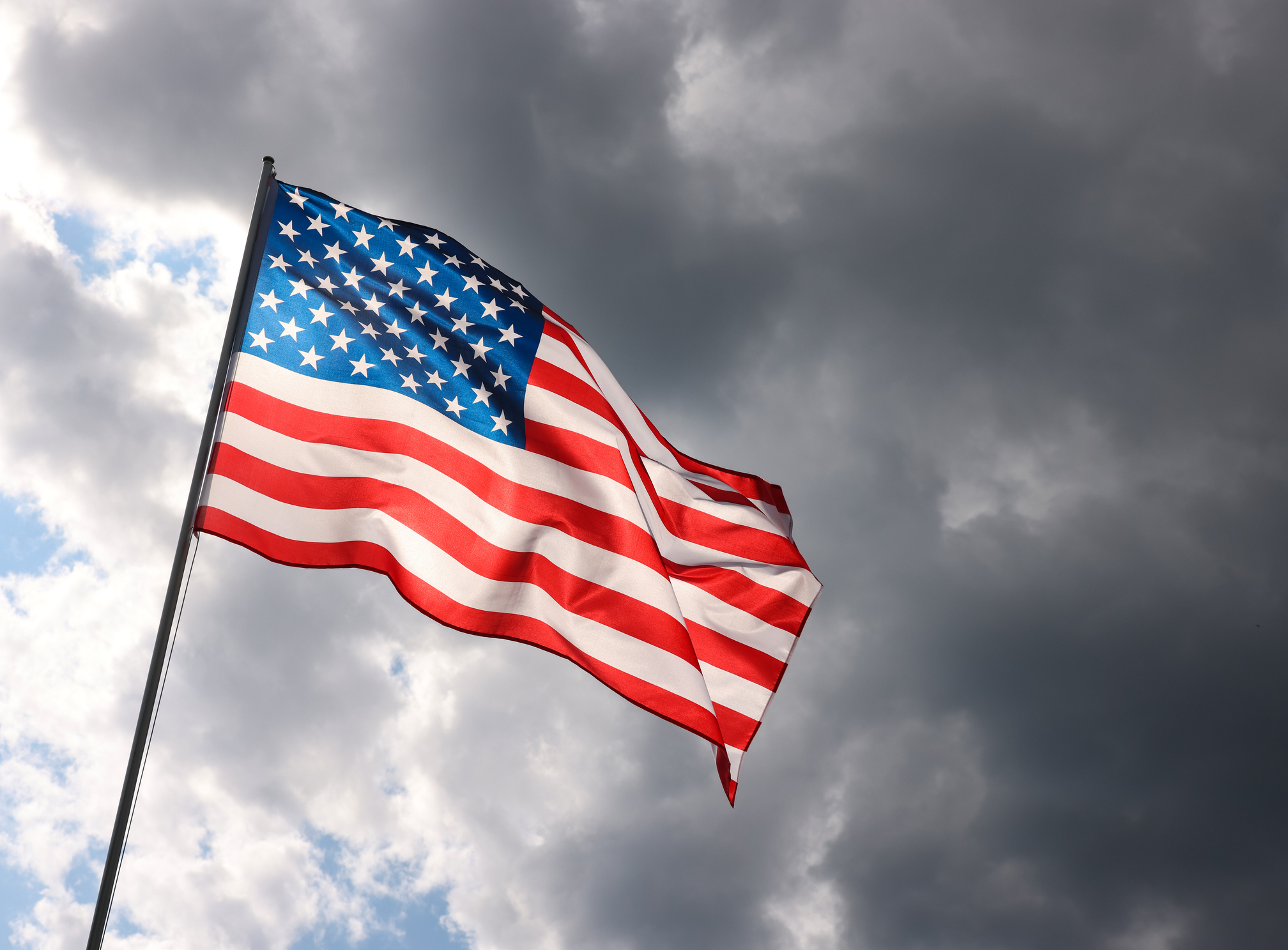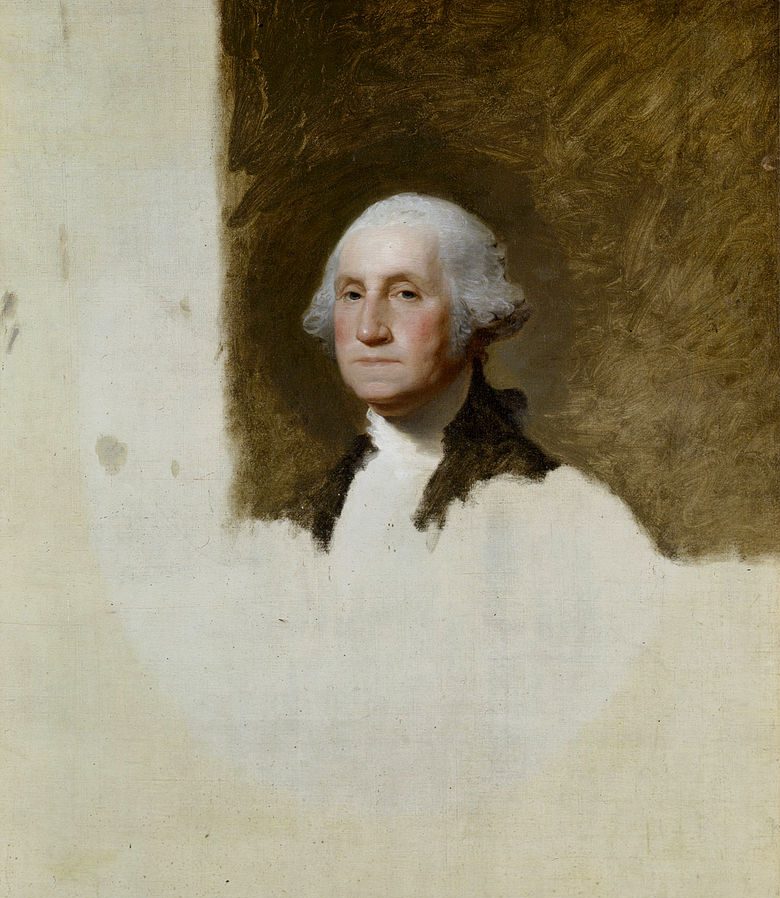Democracy and despotism in a digital age.
Our Gathering Storm

On civil war in America and other unpleasant possibilities.
If you had asked me ten years ago about the possibility of a future civil war in America, I—an “Intelligence Community” veteran who analyzes civil conflict in Asia—would have laughed. I’m not laughing anymore, and neither are a lot of other people. Recent tensions between the federal government and Texas over the former’s refusal to secure the border and enforce immigration law are bringing to life scenarios that once seemed theoretical, if not fantastic. In mid-January, “Texas soldiers” took control of a section of the border near Eagle Pass and then denied access to federal agents, setting the stage for a standoff some alarmists are calling “today’s Fort Sumter.” Even as Texas pushes beyond legal and normative boundaries, creating a potential constitutional crisis in the process, more dangerous challenges lie ahead. In today’s America, a combination of democratic backsliding, ethnic factionalism, and elite splintering have set the stage for a series of intractable political and legal challenges that could plausibly lead to violence in 2024. The only real questions now relate to the scale of the violence and whether the American union will ultimately survive it.
I’m not alone in my pessimism; Barbara F. Walter, a prominent political scientist, argues that the conditions for civil war are emerging in America. Her findings are a relatively sound synthesis of a large body of research into the correlates of civil war. What mars Walter’s study is that she embeds her findings in a tendentious analysis of American politics, laying the blame for these dangerous trends at the feet of white men, Republicans, and all the other boogeymen of the Left. There is a revealing irony in seeing an assessment of the prospects for civil war laid out so myopically by a rising member of the ruling class, as if the last eight years of Democratic Party-led soft coups and anarcho-tyranny never happened. It is this same lack of self-awareness that is driving our society to a breaking point.
Since 2016, right-wing populist movements have, with varying degrees of success, pushed back against the managerial elite that sits atop the Western political order. From recent riots in Ireland over migrant crime, to farmer protests in Europe over taxes and climate policy, regime opponents are demanding to be heard. But rather than seeing these events as an invitation to adjust course, today’s optimates, disdainful of the plebs and their tribunes, are doubling down on their divisive policies and embracing authoritarian methods to subdue the populares.
In Canada, that meant shutting down the bank accounts of “Freedom Convoy” protestors. In Britain it meant suppressing information about so-called “grooming gangs.” In Germany, it has meant a concerted effort to marginalize a major political party that could culminate in the banning of that party. In the United States, which has been at the center of the right-wing populist storm since the beginning, the system has attacked Trump and Trumpism from many directions. The man is effectively facing multiple life sentences for a mix of speech and paper crimes, while at the same time regime agents work to expropriate his wealth in a politically-motivated sham trial in New York. The rank-and-file members of the movement also face peril. Some are in jail for crimes that, while technically real, would be forgiven if committed by regime allies. These unfortunates can best be described as political prisoners. Others face daily censorship and loss of livelihood—forcing a retreat from the daylight of public discourse in favor of the shadows of social media shitposting and electronic samizdat.
Predictably, the effect of these ever more nakedly antidemocratic, antiliberal acts has been to drive the Right toward embracing its own hardline measures. One can see a newfound desire to reject the old politics of compromise and dogged adherence to system norms in favor of tit-for-tat factional politics of the sort unfamiliar to most Americans. The old conservative establishment—dedicated as they are to the system—is increasingly marginalized. Replacing them is a motley crew of diverse thinkers, from Catholic integralists to Nietzschean vitalists, united only in their disdain for the system and their unwillingness to play the role of the beautiful loser. It is this combination of intellectual ferment and frustration with traditional politics that is driving interest in the writings of men like Carl Schmitt. Schmitt’s ideas, particularly the “friend-enemy distinction” and the “state of exception,” have taken on an almost cliched quality as conservatives seek intellectual justifications for embracing hard-nosed, action-reaction politics. Similarly, talk of a “Red Caesar”—a Napoleon-like figure willing to pick up the crown of a collapsing America with his sword—further signals that many on the Right are increasingly open to hitherto unthinkable solutions to increasingly insoluble problems.
All this has combined to push the American political system from the sometimes messy, but mostly safe world of liberal democracy—where leadership transitions are predictable, and disagreements are sorted out at the ballot box—to the decidedly less safe world of anocracy—where confidence in institutions is low and a winner-take-all system raises the stakes for all players in the political game. As Walter and other scholars of intra-state war have noted, anocracy is a bad place to be, because democratic backsliding correlates strongly to civil war—something no one should be eager to see.
But a slide toward authoritarian politics is only one of the forces in play. Of equal concern is the rise of ethnic factionalism in America. Ethnic diversity in itself does not correlate strongly to civil war, but it does provide convenient fracture lines for a society. The presence of distinct ethnic communities also helps to reduce the force of the collective action problem at the heart of the civil war question, attenuating the increased risk of death or imprisonment faced by the early adopters of resistance to the state. For our society, atomized, deracinated, and individualistic as it is, the collective action problem is even more acute. We’ve been bowling alone for a long time, and so ethnicity, race, and religion provide useful connection points for people who otherwise lack a common basis for organizing. The presence of a coherent ethnic community provides would-be rebels with not only a means of framing potential grievances (e.g., past oppression by a majority group); it can also provide potential rebels with unique cultural institutions capable of facilitating collaboration (e.g., the stereotype of the local radical mosque) and thus lowering collective action barriers.
In contrast to how a sane regime would manage the challenge of presiding over a multiethnic society through policies intended to downplay racial grievances and encourage unity, America’s ruling elites seem committed to the opposite course. Indoctrinated as they are into a globalist ideology of struggle toward a borderless utopia, America’s ruling elite seem fully committed to an endless cycle of relitigating and reinterpreting the country’s past through the lens of race and gender inequality. The result is the rekindling of dormant racial animus and the breeding of new resentments as essential national myths are discredited with every school renamed and every statue melted down to be replaced with “inclusive art.”
Yugoslavia provides a useful historical example. Under Tito, imperfect though his administration was, ethnic hostility was largely contained through a mix of repression and calibrated inter-group power sharing. When Tito died in 1980, it didn’t take long for what scholars call “ethnic entrepreneurs” like Slobodon Milosevic and Franjo Tudjman to tap into deep-seated resentments to advance political goals. In some cases, such figures are little more than demagogues pursuing power. In other cases, they’re true believers acting in pursuit of their vision of the greater good. In the United States, we can see both at work. But regardless of the animating spirit behind their actions, the results are the same—a deepening of inter-ethnic cleavages and an increased risk of violence.
Another piece of the puzzle is elite fragmentation. Bottom-up political change is a rarity in society. In most cases, a tightly organized counter-elite forms to challenge the dominant elite either as the old elite splits, or as a new elite emerges to challenge the old order. To be sure, cascading state failure can happen in the absence of a viable counter-elite, as Stephen Kotkin noted in his path-breaking book The Uncivil Society, which looked at the collapse of communism in Eastern Europe. However, civil wars almost always involve the emergence of a determined vanguard elite.
In the Spanish Civil War, a highly factionalized ruling elite fragmented along Left-Right lines. A split within the military between left- and right-wing military officers helped ignite Guatemala’s civil war in 1960. Divisions within the Russian ruling class helped set the stage for revolution and civil war. In the case of America prior to 2016, it would have been appropriate to think of the elite as united in its basic assumptions and ideology—the “transpartisan,” managerial elite James Burnham described in The Managerial Revolution. While there were some minor disagreements about policy—how much to tax and how much to spend—even on matters of war and peace there was remarkable uniformity of opinion.
The election of Donald Trump in 2016 changed all that. For the first time in decades, American elites are truly fractured. The Republican Party has become more the party of Donald Trump and less the party of Nikki Haley. The substance of this is that the Republican Party is becoming a true counter-elite as it grows more alienated from the assumptions of the old managerial order, and more open to a radically different vision of society and governance. Meanwhile, federalism ensures a certain amount of political fragmentation is already baked into the American system; it’s no coincidence that the battlelines for America’s first civil war largely matched state borders.
While civil war has captured recent headlines, there are other possibilities worth discussing. One that has received some attention is the chance that an insurgency will emerge in America. If a civil war involves violence between the state and an internal challenger capable of fighting back with either regional secession or national control on the line, an insurgency is a smaller scale politico-military struggle that is often regional in nature and asymmetric in its operational profile. In the real world, the lines between the two are often blurred, which is why social scientists often use a battle death requirement to help code conflicts as civil wars or insurgencies—the former is usually set at 1,000 in a year or over a longer, but still condensed period of time, with conflicts below that threshold being characterized as terrorism, insurgency, or “civil conflict.”
Insurgencies almost never emerge in wealthy states, not because such states lack populations with internal grievances; rather, rich countries have high levels of “state capacity,” the resources and reach to exercise full control over their territory. Poor countries with inaccessible terrain, such as mountainous regions, often struggle with insurgencies, because weak states are less able to stop insurgent groups from forming and metastasizing in rural areas. The American government is many things, but it is not weak, at least not in a hard power sense. This reality then adds to the collective action problem mentioned earlier. It takes a special kind of lunatic to attempt to launch an insurgency under such conditions.
So, what do we have to look forward to in 2024? Were I a betting man, I would bet against a full-blown, hot civil war. Greg Abbott doesn’t strike me as a man of “supreme daring,” and while this year’s presidential election will almost certainly include a heavy dose of factional politics, any major dustup is likely to occur after months of litigation, name-calling, and 1930s-style street battles. While insurgency is probably not in the offing, lower order forms of violence are probably on the horizon—to include lone-wolf terrorism and organized factional violence. So far, most of the violence we’ve seen has emanated from the Left, although it is difficult to prove that definitively, as prosecution rates for the Left’s shock troops and berserkers are much lower than those for their right-wing analogues. This is because the former have so far benefited from some regime protection. As the Right becomes more unified under Trump’s leadership and more intellectually and morally at peace with embracing a rougher brand of politics, we’re likely to see a more open embrace of tit-for-tat factional fighting.
To cite a well-known historical example, the Roman civil wars of the first century BC were preceded by years of violent factional politics and elite fracturing. As in the case of Rome, there will be plenty of off ramps along the way. Pompey and the Senate could have avoided war with Caesar had they been a little more flexible, after all. Of course, if men of Pompey’s and Brutus’s caliber couldn’t find their way to those off ramps, I doubt the cast of geriatrics and buffoons leading our politics will.
The American Mind presents a range of perspectives. Views are writers’ own and do not necessarily represent those of The Claremont Institute.
The American Mind is a publication of the Claremont Institute, a non-profit 501(c)(3) organization, dedicated to restoring the principles of the American Founding to their rightful, preeminent authority in our national life. Interested in supporting our work? Gifts to the Claremont Institute are tax-deductible.






